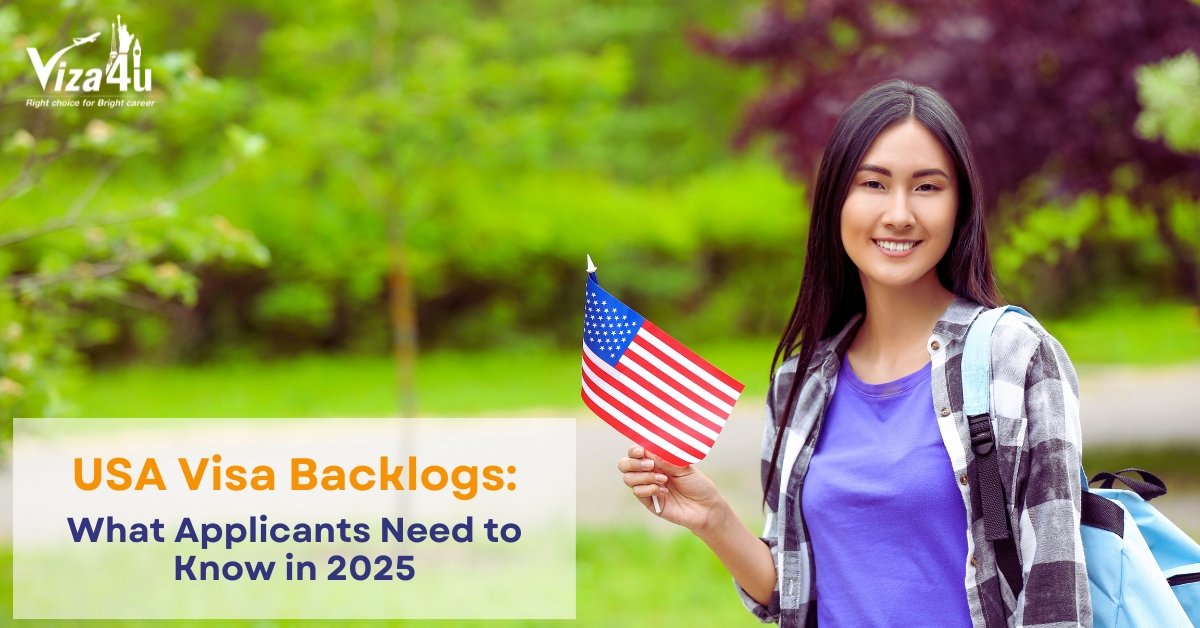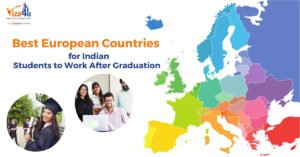The United States remains one of the most sought-after destinations for students, professionals, and travelers. However, visa processing delays continue to be a major concern, affecting thousands of applicants worldwide. Whether you are applying for a student visa (F-1), work visa (H-1B, L-1), tourist visa (B1/B2), or an immigrant visa (Green Card), understanding the current visa backlog situation is crucial for planning your application.
In this guide, we will explore the reasons behind the USA visa backlogs in 2025, the estimated processing times, and practical steps applicants can take to minimize delays. If you are facing challenges in your visa process, working with an experienced USA overseas consultant can provide valuable support and guidance.
Why Are USA Visa Backlogs Still a Problem in 2025?
Visa processing backlogs have persisted due to several key factors:
- High Application Volume – Post-pandemic recovery has led to a surge in visa applications, overwhelming embassies and consulates.
- Limited Appointment Availability – Many US embassies still struggle with staffing shortages, leading to extended wait times for interview slots.
- Administrative Processing Delays – Some applications undergo additional security checks, which can extend processing times.
- Frequent Policy Changes – Adjustments to US immigration policies often lead to temporary delays.
- Peak Season Demand – Certain visa categories, such as student and work visas, see a surge in applications during specific months, further increasing backlogs.
Current Visa Processing Times in 2025
Visa wait times vary based on the category, country of application, and embassy workload. Below is an estimate of current processing times:
- B1/B2 (Tourist & Business Visa): 6 to 12 months (varies by location)
- F-1 (Student Visa): 2 to 6 months (expedited options available in some cases)
- H-1B (Work Visa): 4 to 8 months (premium processing reduces this to 15 days)
- L-1 (Intracompany Transfer Visa): 3 to 6 months
- Employment-Based Green Card: 12 to 24 months
- Family-Sponsored Green Card: 2 to 5 years (depending on the category)
Due to these delays, it is critical for applicants to plan ahead and take proactive measures to avoid disruptions in travel, work, or study plans.
How to Handle USA Visa Delays in 2025
- Apply as Early as Possible
Applying well in advance is the best way to mitigate visa delays. If you are a student, submit your visa application at least 6 to 12 months before your program starts. For work or immigrant visas, begin the process as soon as your eligibility is confirmed.
- Check for Expedited Processing Options
Some visa categories, such as the H-1B work visa, offer premium processing, which guarantees a response within 15 days for an additional fee. Student visa applicants can request an emergency appointment if they have a valid reason, such as an approaching university start date.
- Consider Alternative US Embassies
Visa processing times differ by location. If appointments are unavailable in your home country, you may check for slots in neighboring countries with shorter wait times. A USA overseas consultant can help identify the best alternative embassies for faster processing.
- Ensure Your Application Is Complete and Error-Free
Incomplete or incorrect applications often lead to delays. Before submitting, verify that you have the necessary documents, including:
- A valid passport with at least six months of validity beyond your intended stay.
- A properly completed DS-160 (Non-Immigrant Visa) or DS-260 (Immigrant Visa) form.
- Proof of financial stability (for student and visitor visas).
- Employer sponsorship documents (for H-1B, L-1 visas).
- Academic transcripts and admission letters (for student visas).
- Stay Updated on Policy Changes
US immigration policies change frequently, affecting visa processing times and requirements. Checking official sources such as the US Department of State website and seeking guidance from a professional overseas consultant can keep you informed of the latest developments.
- Track Your Application & Follow Up Regularly
Once your application is submitted, you can track its status on the Consular Electronic Application Center (CEAC). If your case is under administrative processing, it may take longer for approval. Following up periodically and ensuring all additional documents are provided promptly can help speed up the process.
How a USA Overseas Consultant Can Help
Navigating the US visa process can be complex, especially when facing backlogs. Many applicants turn to overseas consultants for expert guidance. A USA overseas consultant can help by:
- Advising on the best visa category and process for your situation.
- Ensuring accurate documentation to minimize delays or rejections.
- Identifying embassies with shorter processing times for faster appointments.
- Providing legal support for administrative processing cases.
- Offering alternative solutions in case of prolonged delays.
With the right professional assistance, applicants can reduce processing times and improve their chances of visa approval.
The Impact of Visa Backlogs on Travelers
Visa backlogs do not just cause inconvenience—they can seriously affect travel, work, and education plans:
- Students may face difficulties enrolling in their programs on time.
- Employees risk losing job opportunities due to visa processing delays.
- Tourists and business travelers experience uncertainty in their trip planning.
- Families may face long wait times for reunification.
For these reasons, it is essential for visa applicants to be proactive, informed, and well-prepared.
Final Thoughts
The USA visa backlog in 2025 continues to create challenges for applicants worldwide. However, by understanding the root causes of delays, applying early, and leveraging expedited options, applicants can reduce the impact of backlogs on their plans.
Additionally, working with a USA overseas consultant can provide professional assistance in navigating complex visa processes, ensuring compliance with regulations, and increasing the chances of a successful outcome.




